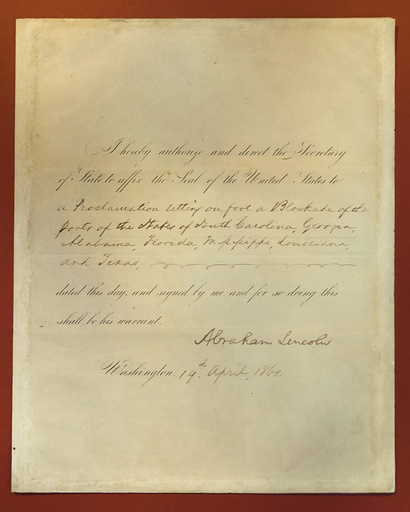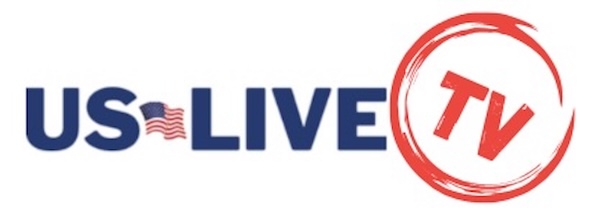SPRINGFIELD, Ill. (AP) — The document in which Abraham Lincoln set in motion the Union’s military response to the launch of the U.S. Civil War is now among Illinois’ prized papers of the 16th president, thanks to a donation by the state’s governor and first lady.
The order to blockade Southern ports to prevent the Confederacy from shipping economically vital cotton or importing critical needs was signed April 19, 1861 — one week after secessionist forces fired on Fort Sumter at the entrance to Charleston harbor in South Carolina.
An anonymous collector who owned the document put it up for auction, where Gov. J.B. Pritzker and his wife, M.K. Pritzker, bought it. The Pritzkers were scheduled to visit the Abraham Lincoln Presidential Library and Museum in Springfield, which will house the artifact, later Tuesday.
“This document — and the museum as a whole — serves as a reminder of how far we’ve come,” the multibillionaire Democratic governor said in a statement obtained by The Associated Press in advance. “Despite our divisions and challenges, more than 150 years later, our nation perseveres.”
M.K. Pritzker said the paper is a testament to Lincoln’s “unwavering pursuit of justice” and encouraged visiting the museum to examine Illinois’ history “and the ways it’s intertwined with the history of our nation.”
The purchase price was undisclosed, but the document is listed online as sold for $471,000 in July 2023 by Heritage Auctions.
Calling on the Union to flex its naval muscle by shutting off shipping at ports in South Carolina, Georgia, Alabama, Florida, Mississippi, Louisiana and Texas, the “Proclamation of a Blockade” set up the eastern part of Gen. Winfield Scott’s scheme to hem in the Confederacy. The western portion had Union troops steaming down the Mississippi River to cut the secession in half. Critics who sought a more aggressive push derisively dubbed it the ”Anaconda Plan,” conjuring images of a snake slowly suffocating its victim. The name stuck.
Virginia had seceded on April 17, but the state, and North Carolina after it split from the Union on May 20, were added to the blockade order later.
“The horrible violence of the Civil War started with attacks on U.S. forces. President Lincoln had to respond or accept that the nation had been torn in half, condemning millions of people to continued enslavement,” Christina Shutt, executive director of the presidential library and museum, said in a statement. “This incredible document represents Lincoln saying America was worth fighting to save.”
Lincoln had to step gingerly, for a declaration of war against his own people was loathsome but more importantly would have legitimized the Confederacy as a nation able to establish diplomatic ties internationally. A blockade, he averred, was merely a necessary step to put down an internal insurrection.
The blockade proclamation will go on display in the museum’s light- and climate-controlled Treasures Gallery beginning Wednesday. It will be on display until February 2025.




